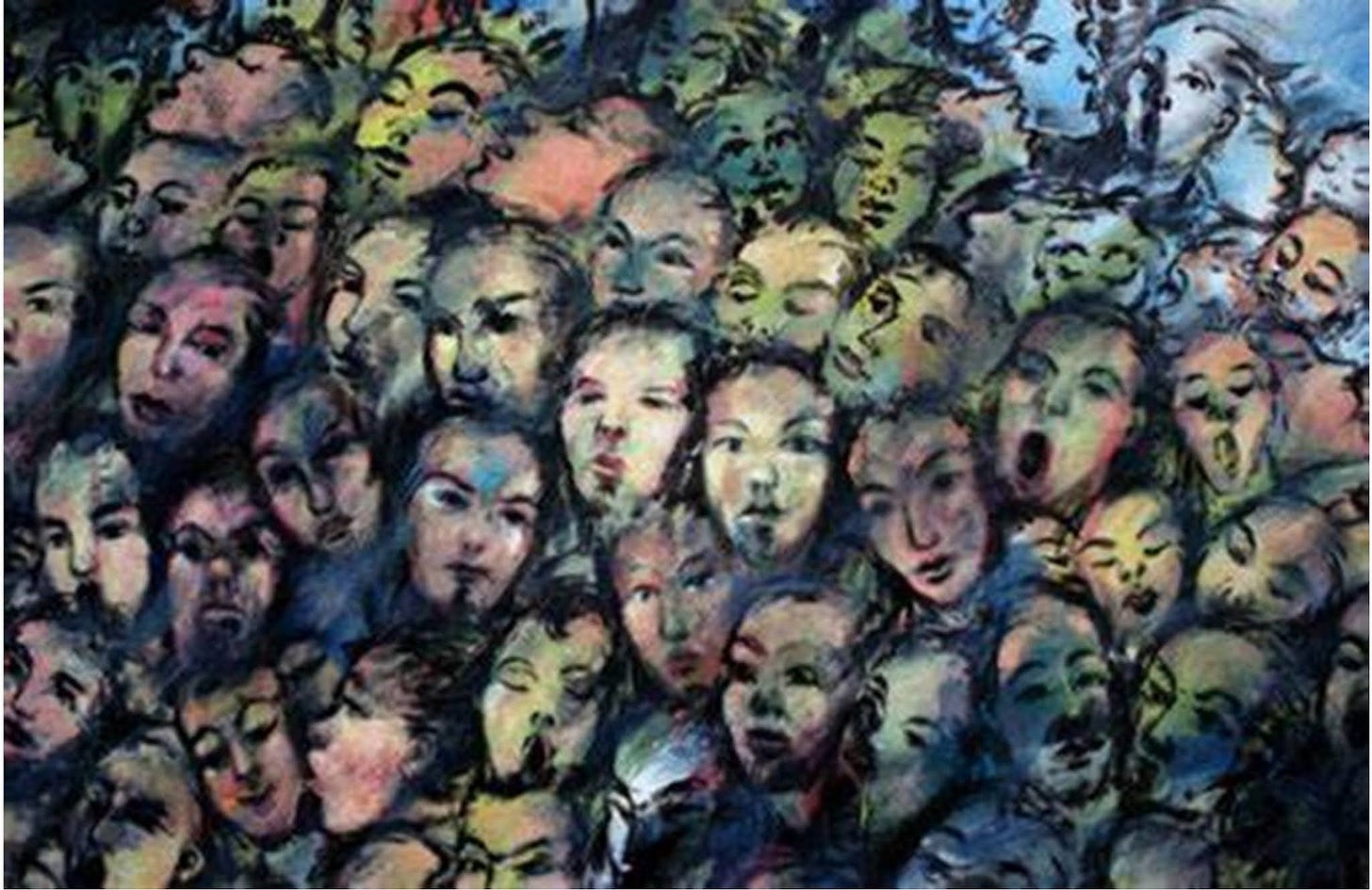[In Part 1, the origins and the flourishing of gender were examined. Although over the centuries its application ramified and at times contracted, it stayed largely true to its root. We continue to inspect the progression of gender in the twentieth century, where while often coming into conflict with their understandings of sex, it was employed by psychologists to make distinctions in a manner that would be useful to later professionals in psychology and related disciplines. These pioneers probably never imagined how their nebular hypotheses [sic] would be abused in the tumultuous century that proceeded them.]
Modern Times
Affected by this deficiency in the use of the English language, and by the opprobrious Sigmund Freud’s psychoanalytic practices and questionable Oedipal complex concept, Leland Hinsie[1] a psychiatric lexicographer and psychiatrist of the psychodynamic speciality, promoted his hypothesis on psycho-erotic progression and urged the use of his distinctive understanding of gender – but rather revolutionarily not sex, as being what the sexes receive by nature as maleness and femaleness. Hinsie disqualifies sex on account of its assumed imaginative association with the erotic and genito-sensory.
Moreover, gender – described as the “forerunner to sex”, was reduced in the 1940 first edition of the Psychiatric Dictionary, to merely the anatomy and appearance of males and females, inclusive however of attire. Interestingly - although in hindsight, Hinsie elaborated elsewhere that gender includes the senses of attention to, identification with, and even resolution to imitate sex-based dress, activity and interests – and that gender can be impressed upon a person[2].
Hinsie used genderism as a descriptor for early psycho-social development related to the libidinous, which was “energised by the reproductive apparatus”. He asserted a “growing away” from a “biologically bigenderistic” status to acquiring “psychological bigenderism” that “gives way to unigenderism” in association with one’s parents, and coined “suigenderism” and “altrigenderism” to be understood as supposed consecutive stages in initial social interest in or adaptation to members of one’s own sex and the opposite sex respectively[3].
The child then has gender but does not have sex, and psychologically develops through “genderism”, by which sex is “functionalised”, where according to the Hinsiean thesis and terminology, “sexuality is a direct continuum with genderism”. The infant is initially unaware of his gender, and subsequently becomes aware – these being non-sexual phases of genderism, and then comes to a phase in the pre-pubertal period where gender is sexualised.
Hinsie who suggested that carnal gratification employing the anus and mouth may be of greater importance than the genitals and may even replace them, while reducing sex from a natural reality to an erotic psychosomatic function, incorporated gender – including its derivatives such as genderist or genderistic, into the psychological literature. He secerns between identifying with one’s sex, socialising with others of the same or opposite sex, behaving and dressing as appropriate to a sex, and even having one’s maleness or femaleness impressed on oneself. Although these facets of sexuality are not new, Hinsie and his multiple editions of the Psychiatric Dictionary over the decades, arguably influenced the employment of gender in the description of distinctions related to aspects of masculinity and femininity in social, psychological, legal and political discourse.
Social Butterflies
Gender was described as “the socialised obverse of sex” in 1945 by Isaac Bentley in the American Journal of Psychology of which he was a long-standing co-editor - in an article aptly forebodingly titled “Sanity and Hazard in Childhood”, which the online OED indicates was the first year in which gender was described thus in print[4]. Bentley took pains to differentiate between gender and “sheer sex” - which was physiological and reproductive and possessed by horses and cows, where “ungendered sex plays a relatively small part in the life-course, at most affecting behavior periodically and with little permanent effect upon the organism and upon the successive phases of its existence”.
Bentley considered gender among individuals as a “socialised interpretation of certain biological differences between male and female”, encompassing sex-distinct behaviour, dress, tastes, occupation, demeanour, character, social functions and expectations. While he reiterated in a 1950 review of a Margaret Mead book that gender refers to “masculine and feminine roles” in contrast to male and female “reproductive functions”, he considered it also as a concept that could be applied to culture as well as to individuals.
For Bentley, gender was a “fundamental social institution” - a “social overlay” which moulds the young to become masculine or feminine members of the human family. It was seen by extension as a cultural force constituted of values or “duty-ethic” moderating the presumed unbridled nature of man - libidinous or other, and thus containing also a moral or regulatory quality.
B. Philosophical Interlude the First
“Against that positivism which stops before phenomena, saying ‘there are only facts’, I should say: no, it is precisely facts that do not exist, only interpretations.”
Friedrich Nietzsche, 1888[5]
Positivism is a system of philosophical and religious doctrines elaborated by Auguste Comte. Philosophical positivism, which denies the validity of metaphysical speculations and maintains that the data of sense experience are the only object and the supreme criterion of human knowledge, pervaded scientific thought of the nineteenth century and indeed exercised a pernicious influence in every sphere.[6]
Early in the twentieth century, pragmatist George Mead inspired by William Thomas promoted the concept of symbolic interactionism, which argues that human beings construct their own and each other’s identities through their everyday encounters, implying that the “self” is created through social interaction. The social phenomenology of Alfred Schulz developed upon Edmund Husserl’s “lifeworld” which subjects experience communally. Edward Sapir and Benjamin Whorf opined on linguistic relativity and the later Wittgenstein delved into intersubjectivity.
Social constructionism an epistemological hypothesis in sociology which asserts that the meanings of phenomena and thereby a shared social “reality” is constructed through social processes and are products of a collective human interaction and interpretation, within cultures and throughout their history - which do not have an independent foundation outside mental and linguistic representation.
As perceived social reality blurred into reality in general, and the distinction between objectivity and subjectivity was lost, it followed non sequitur that an objective reality or truth does not exist. Meaning and understanding then is shaped by culture and context, and truth is dependent on consensus - such agreement perhaps manoeuvered unbeknownst to the subjects via powered discourses where social knowledge becomes a variable, advantageous, group-thought “truth”.
If tomorrow, we feel that 2 + 2 is 5 in San Francisco, the truth agreed upon today is that it is 3.5 yesterday in Patpong. And that is as true as being 7 next year by a windowpane in Amsterdam as announced by the TNI[7], made viral on social media as meta-zero in Weimar Berlin, i in Babylon and π in Gomorrah just before the bolide detonated.
Social constructionism might serve a purpose in the study of the development and changes in social perceptions and the influence upon a culture of communal or individual behaviour or thought, in the development of language and communications, and in processes of learning and understanding, but it exhausts its utility and indeed becomes ruinous when applied to domains external to it applicability or which transcend it - and constructed mass perceptions, fluid whims, and personal opinions and every subjective reality becomes cemented into fantastic truth.
Nevertheless, the application ab absurdam proves popular, of this postmodernist anti-realist anti-essentialist illusionary notion where it cannot serve, and this serves the relativism which justifies the denial of truth when truth proves uncomfortable in the pursuit of justifying nonsense.
[1] Janssen, D. F., in his letters to the Archives of Sexual Behaviour, 2018 and 2020 offers references and opinion.
[2] Hinsie, L. E., The Person in the Body, first published in 1918
[3] He used the latin prefixes for non-erotic socialisation, and the greek for any progression of altrigenderism into heteroeroticism, heterosexuality and heterogenitality, likewise preferring suigenderism for homosociality.
[4] Accessed 4th October 2024
[5] Notes, translated in The Portable Nietzsche (edited by Walter Kaufmann
[6] from https://www.newadvent.org/cathen/12312c.htm
[7] Referred to in https://dreshandias.substack.com/p/the-pied-vipers-of-inaina





